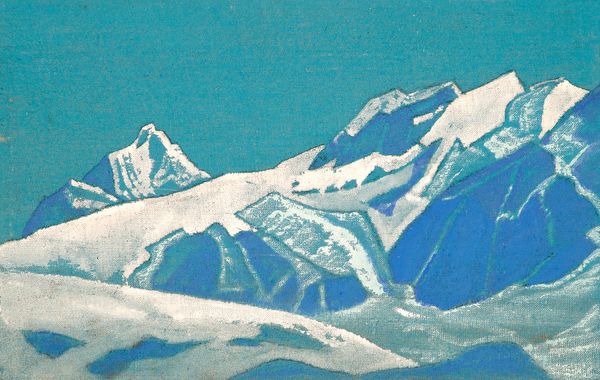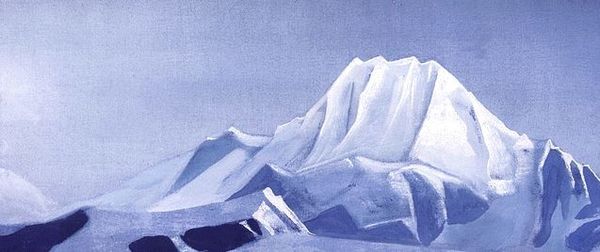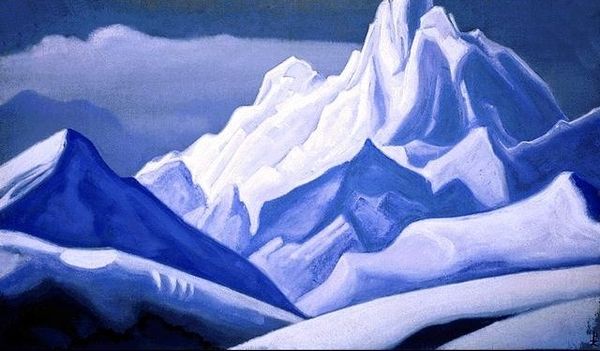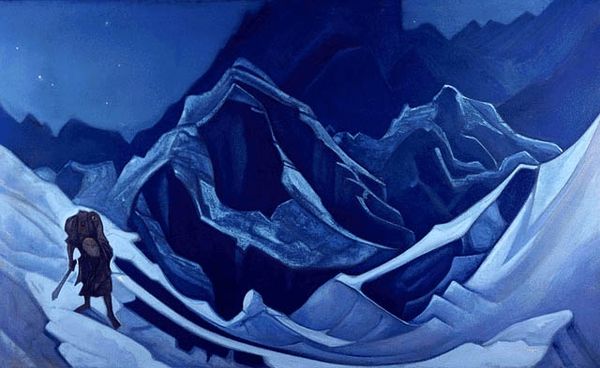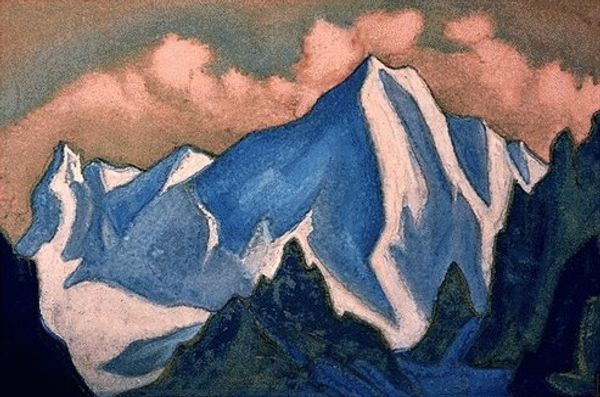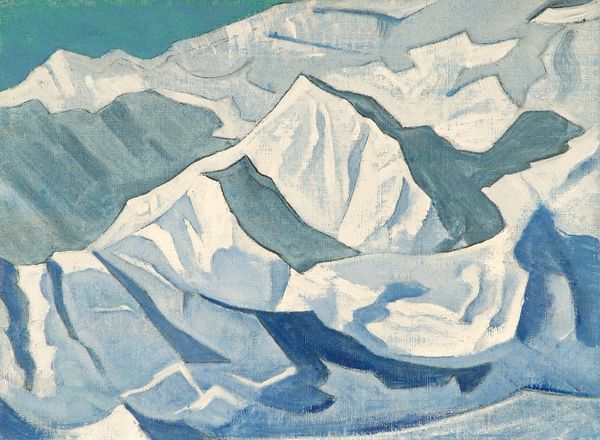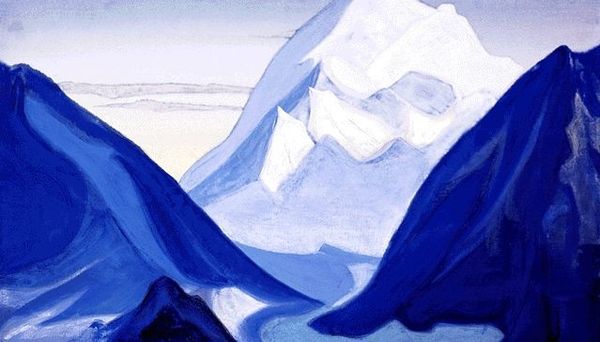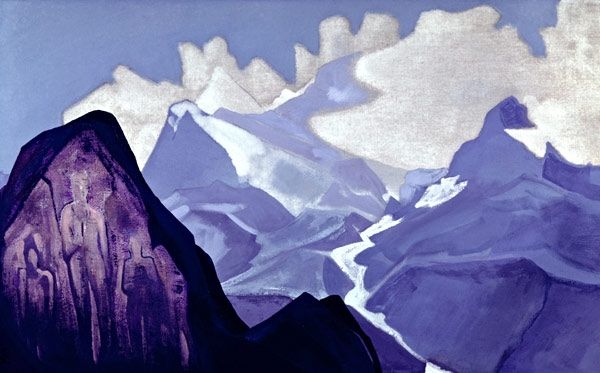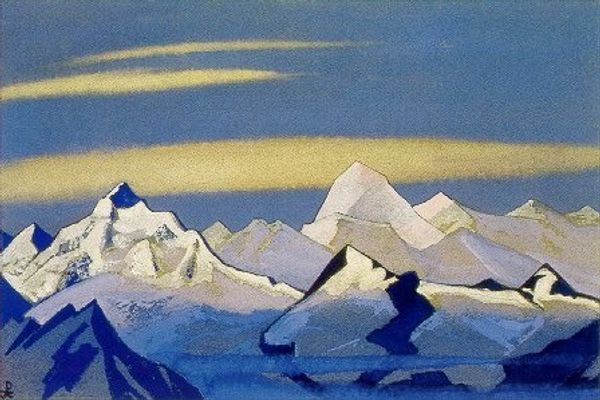
Copyright: Public domain
Editor: We’re looking at Nicholas Roerich’s "Guru Kambala," an oil painting from 1925. It depicts a solitary figure traversing a stark, mountainous landscape. The monochromatic blue palette gives the painting a very otherworldly, dreamlike quality. What do you see when you look at this piece? Curator: The overwhelming sense of monumentality arises foremost from the geometric simplification of forms. Note how Roerich renders the mountain range through a series of faceted planes. This technique flattens the pictorial space and emphasizes the abstract structure of the composition. The figure becomes less important as a figurative symbol and blends with its context. Editor: That's fascinating! So you're saying that by reducing the landscape to these geometric forms, he's prioritizing the structure over the representation? What is the function of that strategy? Curator: Precisely. And the strategic purpose of simplifying the shapes enhances our attention to the subtle variations in the blue pigment, and these convey depth and volume within the composition. The interplay of light and shadow, not rendered realistically, creates visual interest. We understand the composition without needing realistic color variation. Editor: That’s a very close reading. I didn't notice that interplay before! Curator: Note the materiality of the brushstrokes across the rough canvas—observe how texture is part of its compositional grammar, echoing the ruggedness of the landscape itself. The artist made clear choices to include us within its world. Editor: Now I can see how Roerich guides our eye with these geometric planes. Thank you, I've learned so much about how a landscape painting communicates form, color, and shape in visual art. Curator: The painting showcases a study in simplified form, conveying space and dimension to a unique artistic approach.
Comments
No comments
Be the first to comment and join the conversation on the ultimate creative platform.
